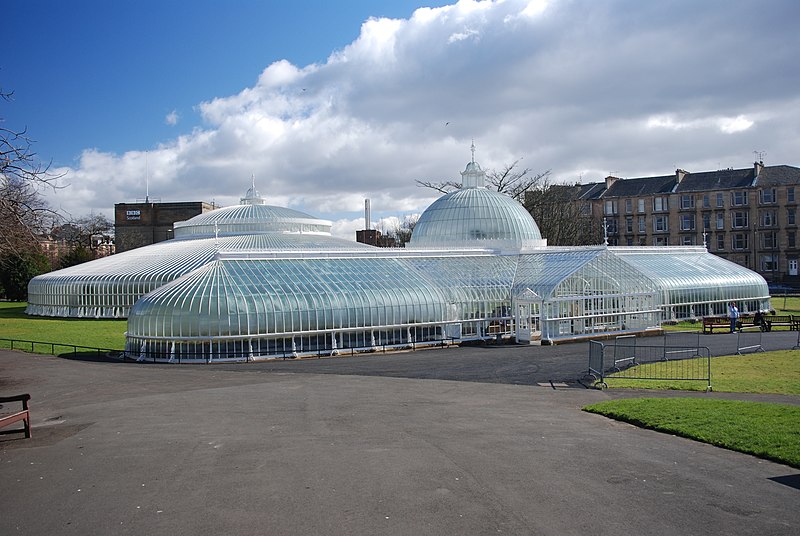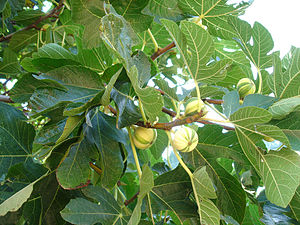My only fruit tree that seems to enjoy the Texas high heat is the Celeste Fig Tree. I love this tree and make fig preserves, but that is all I knew about figs. So your infostudy tonight is from Wikipedia about the fig. I think You will be amazed at some of the facts of this ancient fruit. For a bonus, You get a fantastic Figgy Pudding Recipe!
Big Surprise Tonight: We are going to Scotland!!!! Our G+ friend, David Wilson, has shared some of his superb flower photos with us below in Part 2.
Part 1: My Fig Tree:
http://en.wikipedia.org/wiki/Common_fig
Common fig
| Ficus carica - Common Fig | |
|---|---|
 | |
| Common Fig foliage and fruit | |
| Conservation status | |
| Scientific classification | |
| Kingdom: | Plantae |
| (unranked): | Angiosperms |
| (unranked): | Eudicots |
| (unranked): | Rosids |
| Order: | Rosales |
| Family: | Moraceae |
| Tribe: | Ficeae |
| Genus: | Ficus |
| Subgenus: | Ficus |
| Species: | F. carica |
| Binomial name | |
| Ficus carica | |
Description[edit]
Habitat[edit]
Ecology[edit]
History[edit]
Culinary use
Nutrition[edit]

From My Tree:
http://en.wikipedia.org/wiki/Figgy_pudding
Figgy pudding
 A figgy pudding with flaming brandy | |
| Origin | |
|---|---|
| Place of origin | United Kingdom |
| Region or state | England |
| Details | |
| Type | Pudding |
| Main ingredient(s) | figs |
http://en.wikibooks.org/wiki/Cookbook:Figgy_Pudding
Cookbook:Figgy Pudding
Ingredients[edit]
- 1/2 cup butter
- 1/2 cup vegetable shortening
- 1 cup granulated sugar
- 3 large egg yolks
- 1 cup milk
- 2 tablespoons rum extract (or flavored extract of your choice)
- 2 apples, peeled and cored and finely chopped
- 2 pounds dried figs, ground or finely chopped
- Grated peel of 1 lemon and 1 orange
- 1 cup chopped nuts
- 1/2 teaspoon ground cinnamon
- 1/4 teaspoon ground cloves
- 1/4 teaspoon ground ginger
- 1 1/2 cups dried bread crumbs
- 2 teaspoons baking powder
- 3 large egg whites, stiffly beaten
- 1 strip of bacon, finely crushed (optional - New England variant)
- 1 teaspoon of hot sauce, for drizzling
Procedure[edit]
- Preheat oven to 325 °F. Generously grease an oven-proof 2-quart bowl or mold; set aside.
- Cream together butter and shortening.
- Gradually add sugar, egg yolks, milk, extract, apple, figs, lemon and orange peel.
- Add next 6 ingredients, mixing well. Fold stiffly beaten egg whites into mixture.
- Pour into prepared bowl or mold and place into large shallow pan and place on middle rack in oven.
- Fill the shallow pan half-full with boiling water and slowly steam pudding in oven at 325 °F for 4 hours, replacing water as needed.
Part 2:
We are going to take a quick trip to Scotland via my friend, David Wilson's G+ Albums. David and his wife Jane live in Scotland and make many Nature trips with their cameras. They share the photos of their adventures on G+. (link below). He gave me permission to share some of the photos of their last outing to Glasgow Botanical Gardens. These images can be seen in his Albums along with hundreds of others! If You are new to the Net, be sure to add David and Jane Wilson to your photofriends! Enjoy-

Botanic Gardens Glasgow,Rare flowers and plants from around the ...
https://plus.google.com/109221698061777003785/.../1pGsrf67...13 hours ago – Botanic Gardens Glasgow,Rare flowers and plants from around the world.Vol.1. Botanic Gardens Glasgow June 2013.Vol. 1
Glasgow Botanic Gardens - Wikipedia, the free encyclopedia
en.wikipedia.org/wiki/Glasgow_Botanic_Gardens
Glasgow Botanic Gardens is an Arboretum and public park located in the West End ofGlasgow, Scotland. It features several glasshouses, the most notable of ...

















David Wilson's Google+ Profile Page
https://plus.google.com/u/0/109221698061777003785/about
Thanks my friend, David Wilson and Jane for going to so many great places and sharing with all of us! Cheers!
....this is brendasue signing off from Rainbow Creek. See You next time! Thanks everyone for sharing your photos from around the World. I encourage everyone to open a Google+ Page and begin your albums. My Blog has turned out to be a good garden journal for me to refer to what was happening last year or the year before. Try it-Everyone has a voice. Everyone has a chance to be heard and to share what is important to You.
Get Connected-----Get Google!
O+O



















Thanks so much for this information. I have to let you know I concur on several of the points you make here and others may require some further review, but I can see your viewpoint.
ReplyDeleteShop fig fruit extract